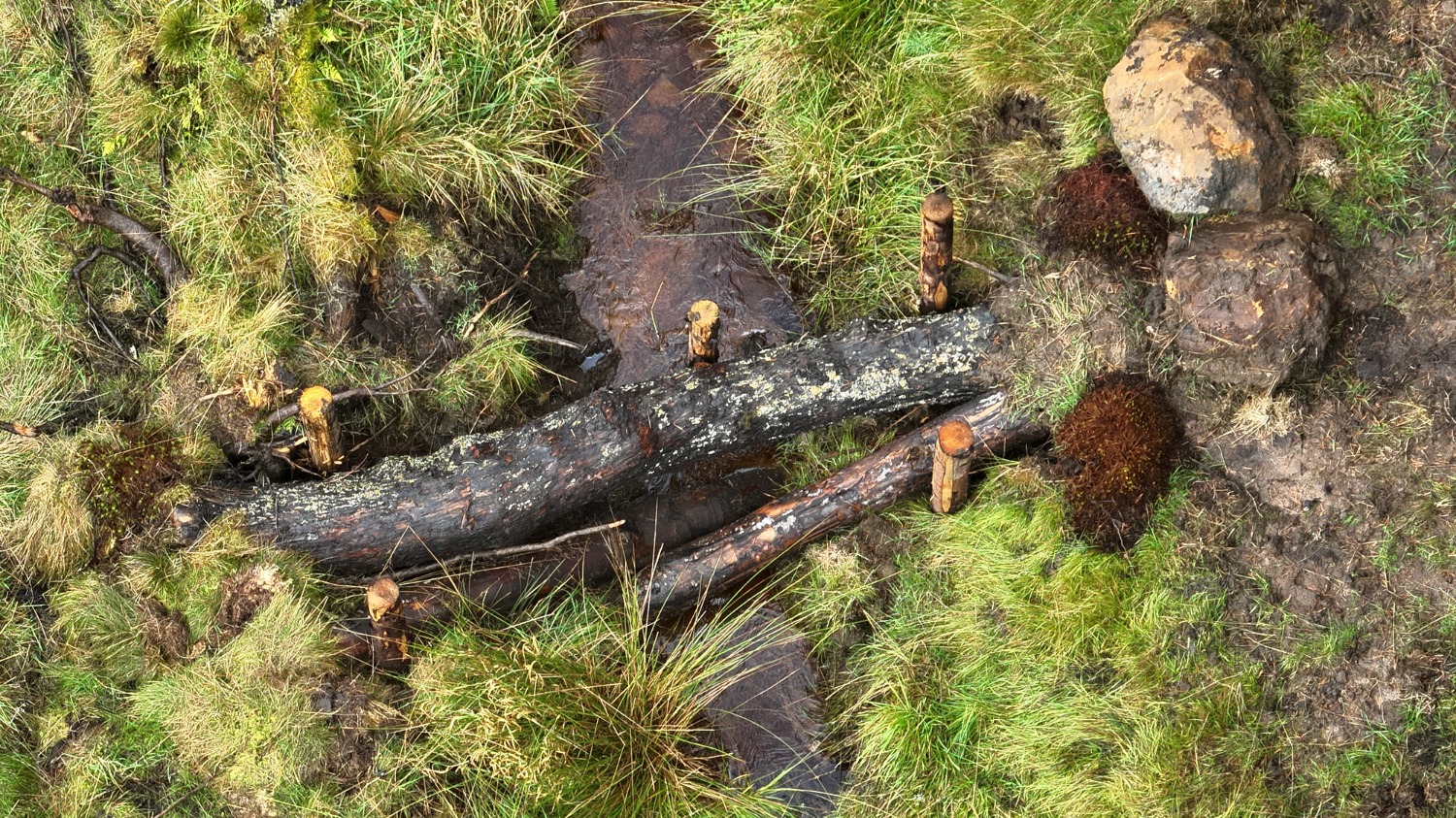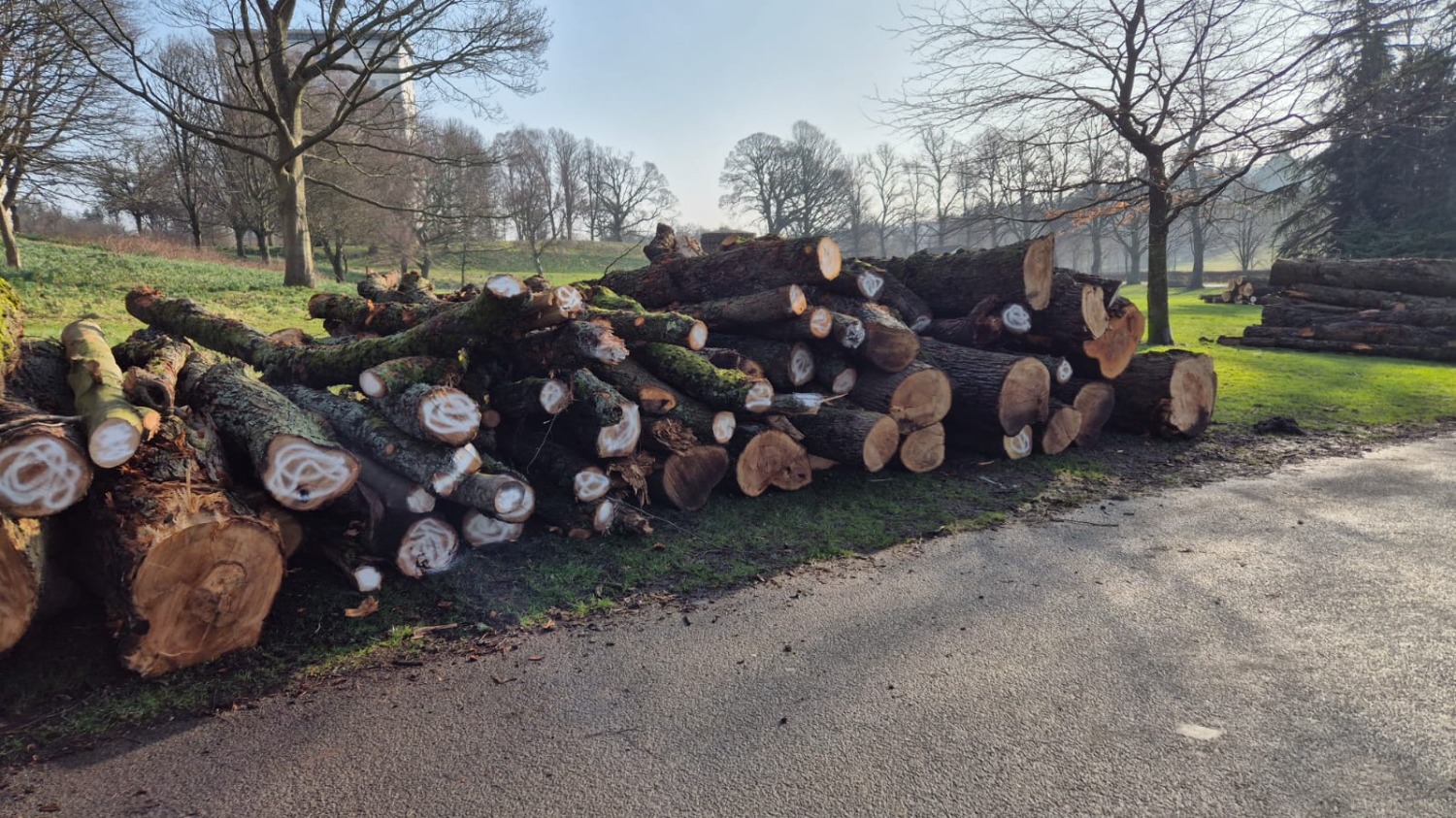
A quarter-mile stretch of the Glen Burn, near Westquarter, has become the site of Falkirk Council’s first project using natural materials to help mitigate flood risks.
Over 40 tonnes of timber, from trees blown down in Callendar Park during Storm Éowyn, have been used to build 10 barriers in a section of the burn that flows to the west of Auchengean Wood. More than 30 floodplain interceptors have also been created.
The measures, dubbed leaky barriers, are built across waterways using logs and branches fixed in place with gaps that let water pass through. In normal conditions the burn will continue to flow as usual – however, during heavy rain, the barriers will hold some of the water back, mimicking the way fallen trees and branches naturally obstruct and slow flow.
Floodplain interceptors, made from felled logs, have also been installed and sit alongside the burn. When the burn is in flood and overflows, the logs will help slow the flow by capturing some of the water and guiding it more gradually back into the channel.

Together, Falkirk Council said that the barriers and interceptors will hold water back in the upper Glen Burn during heavy rain, meaning less water should reach the Westquarter Burn when its levels will also be high. This then lowers the risk of flooding further downstream in places like the Grange Burn in Grangemouth.
Two water gauges have been installed downstream to see how well the barriers and interceptors work, helping teams understand if water levels drop downstream when more water is held upstream, and whether flow patterns change further along the burn.
Councillor Bryan Deakin, Falkirk Council’s spokesperson for climate change, said, “After Storm Éowyn, a lot of people asked what would happen to the trees that fell in Callendar Park. Using some of that timber has been a practical way to recycle logs and reduce flood risk.
“Natural flood management works best in locations like this stretch of the Glen Burn, where natural barriers can slow the flow and make a real difference. These techniques can also be considered alongside larger engineering schemes to maximise their impact.
“This project really does highlight how we can work with nature’s own processes to reduce flooding and protect our communities.”











